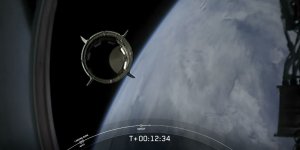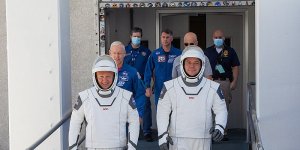| News / Science News |
Scientists discover massive rotating disk in early universe
In the 13.8 billion-year-old universe, most galaxies form gradually, reaching their large mass relatively late.

Artist's impression of the Wolfe Disk, a massive rotating disk galaxy in the early, dusty universe. Photo: NRAO/AUI/NSF, S. Dagnello
But the discovery of a massive rotating disk galaxy, observed at a point when the universe was only 10% of its current age, challenges the traditional models of galaxy formation. The discovery was made with the Atacama Large Millimeter/submillimeter Array (ALMA).
Galaxy DLA0817g, nicknamed the Wolfe Disk after the late astronomer Arthur M. Wolfe, is the most distant rotating disk galaxy ever observed. ALMA's power made it possible to see the galaxy spinning at 170 miles (272 kilometers) per second, similar to our Milky Way.
The discovery of the Wolfe Disk provides a challenge for many galaxy formation simulations, which predict that massive galaxies in the evolution of the cosmos grew through mergers of smaller galaxies and hot clumps of gas.
In most scenarios, galaxies start to show a well-formed disk only around 6 billion years after the Big Bang. The fact that astronomers found such a disk galaxy when the universe was only 10% of its current age indicates that other growth processes must have dominated.
The team also used the National Science Foundation's Karl G. Jansky Very Large Array and the NASA/ESA Hubble Space Telescope to learn more about star formation in the Wolfe Disk. (National Science Foundation)
YOU MAY ALSO LIKE





